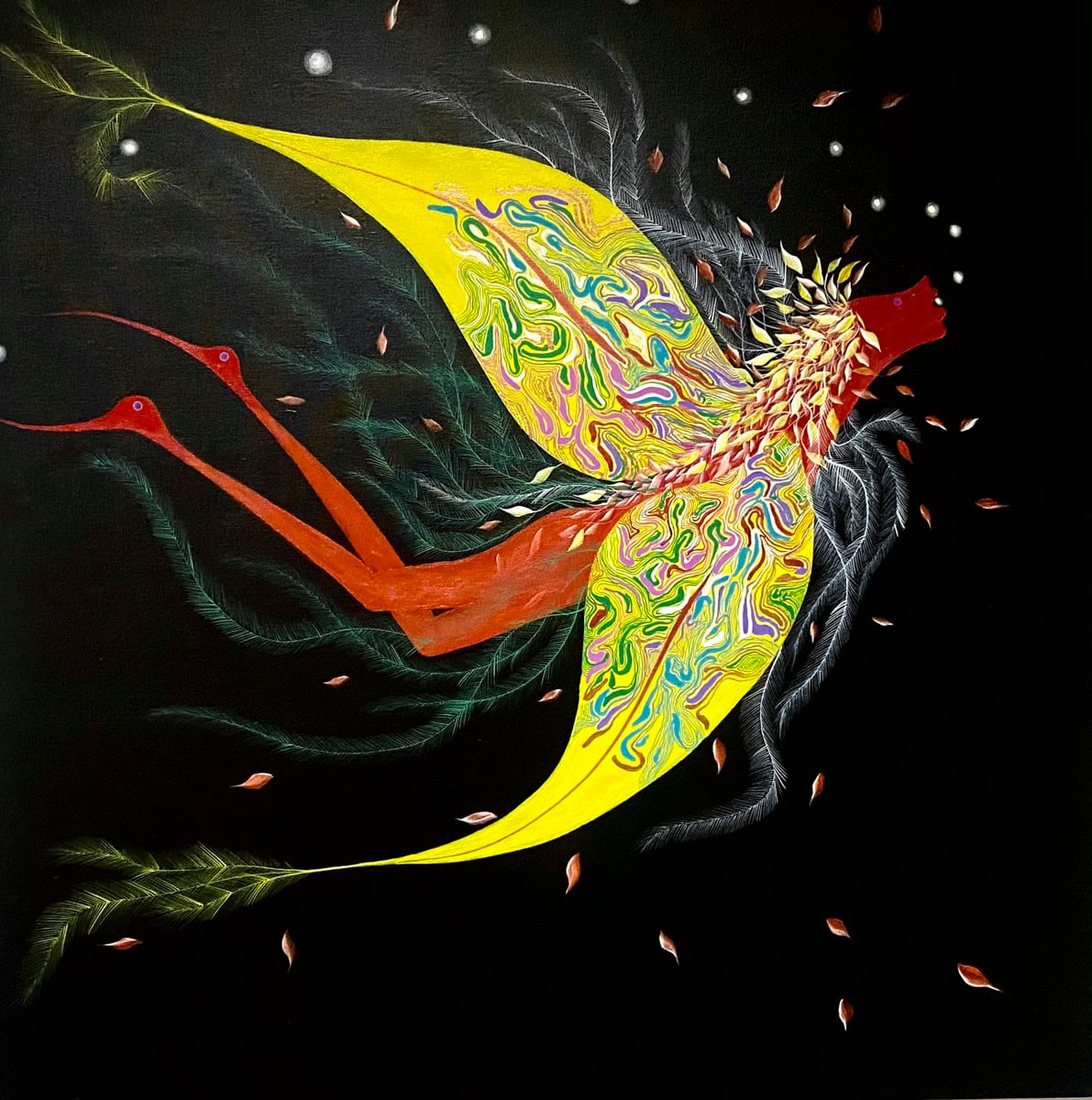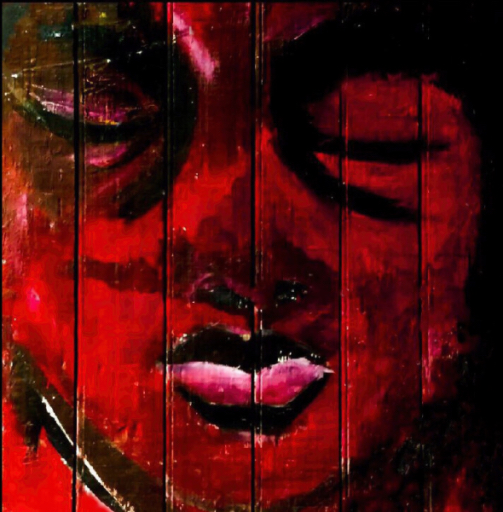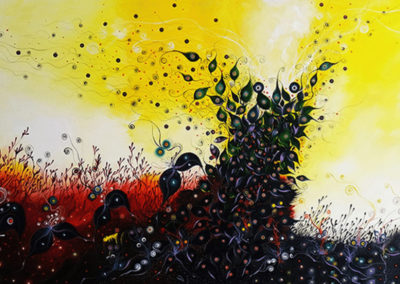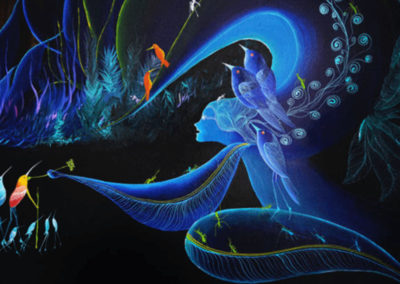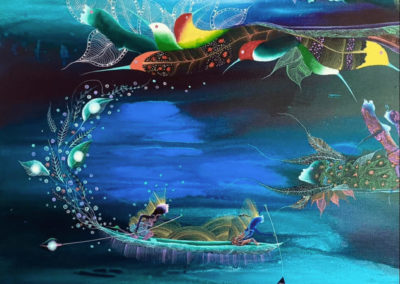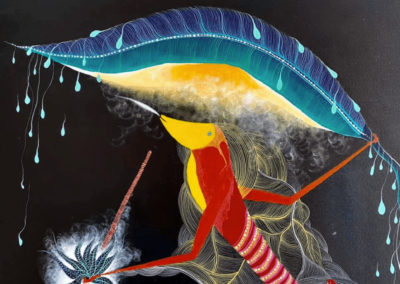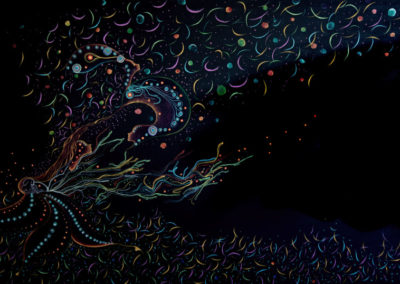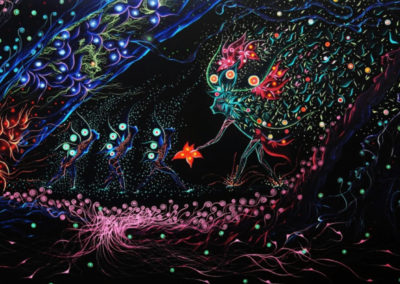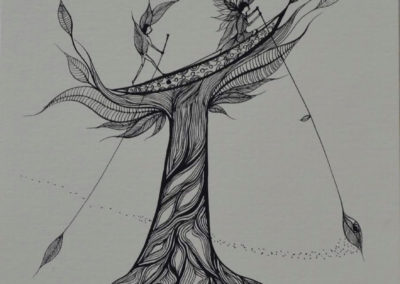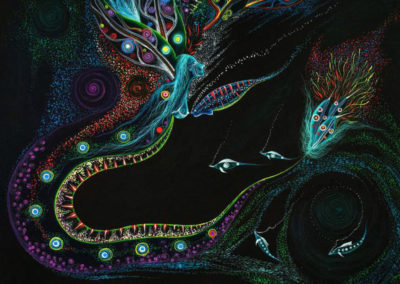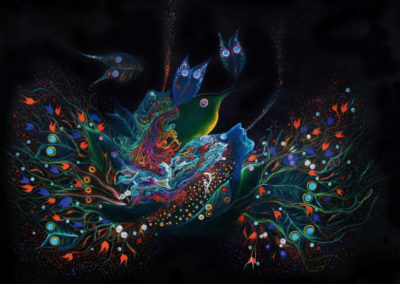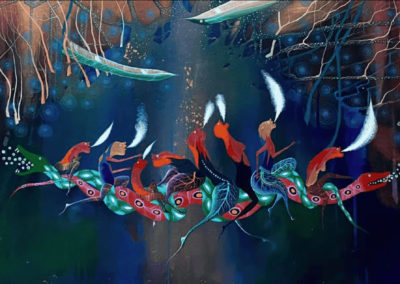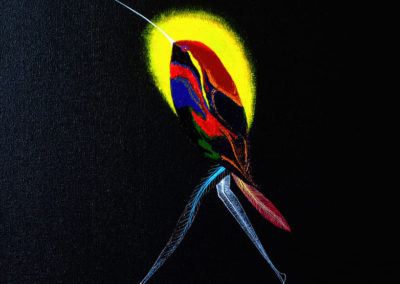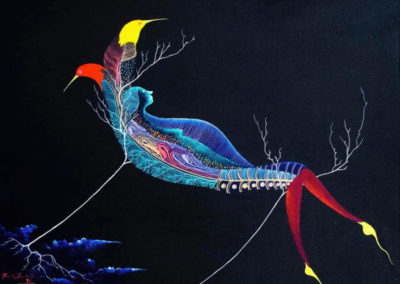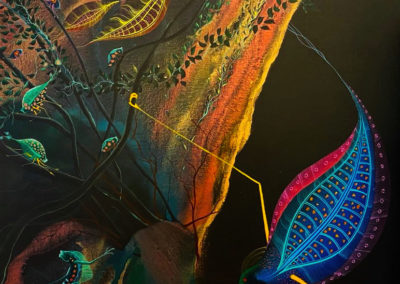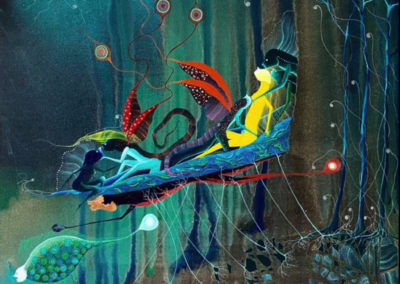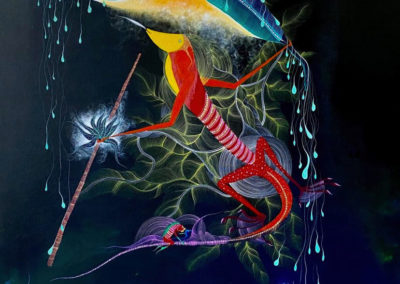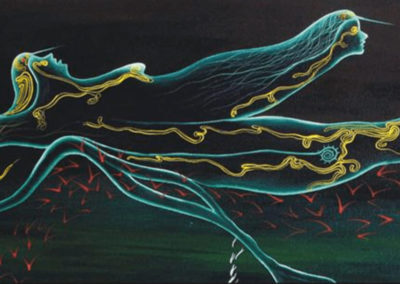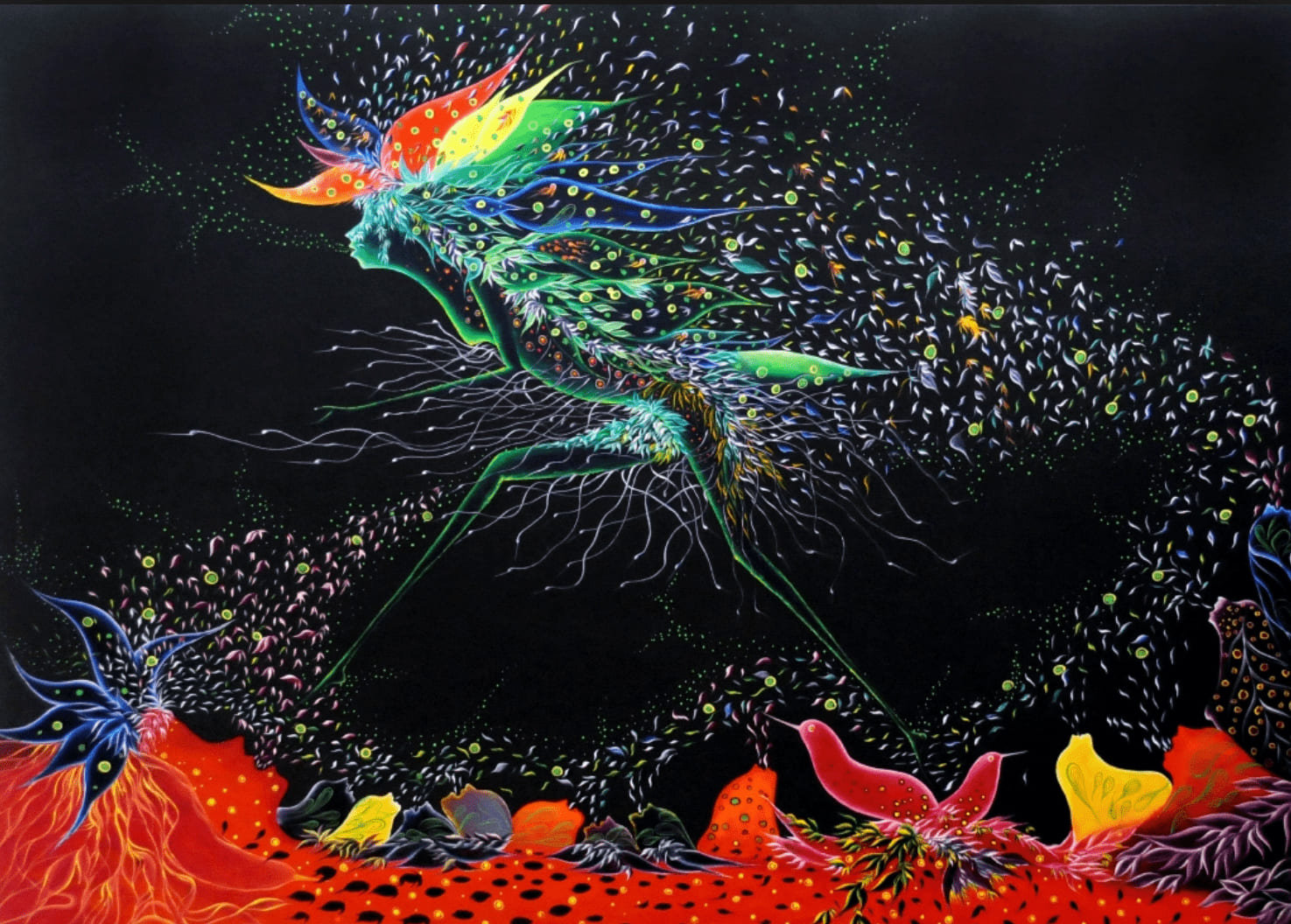
Rember Yahuarcani
Myths are the rivers of our memory, and they represent our origin. They hold the key to our past, present, and future aspirations.
The memory of our grandparents flows in these rivers, and it is in them that we must seek the wise words of resistance against forgetfulness, discrimination, and exclusion.
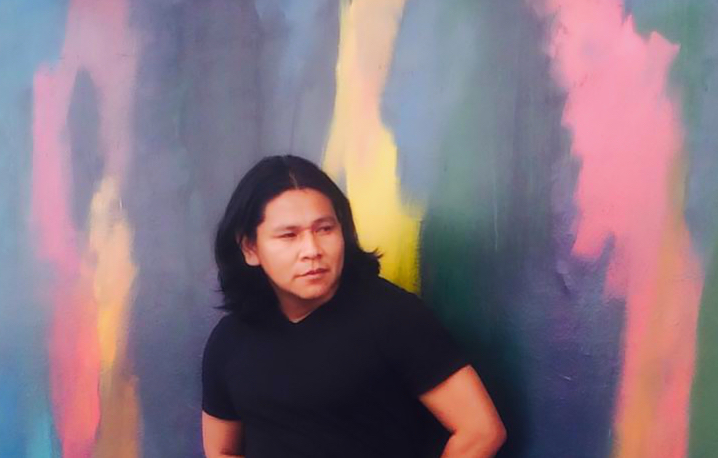

Works
Rember Yahuarcani, an artist hailing from the Huitoto Amazonian ethnic group, brings a profound cultural narrative to life through his rich artistic journey.
Drawing inspiration from the cosmogonic vision embedded in his upbringing, Rember intricately decodes the oral traditions of his childhood.
He then transformes them into captivating forms on the versatile canvas of Llanchama, the traditionally prepared bark of the fig tree. (Amazonian Parchment)
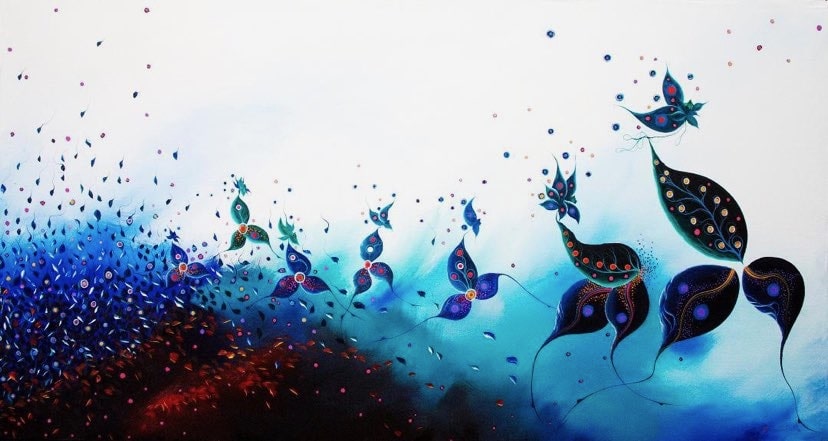
Each of Rember’s hallucinated beings carries a unique history, vividly captured using vegetable dyes or acrylics.
While initially translating myths from the Huitoto cosmogony linearly, a transformative shift occurred this year.
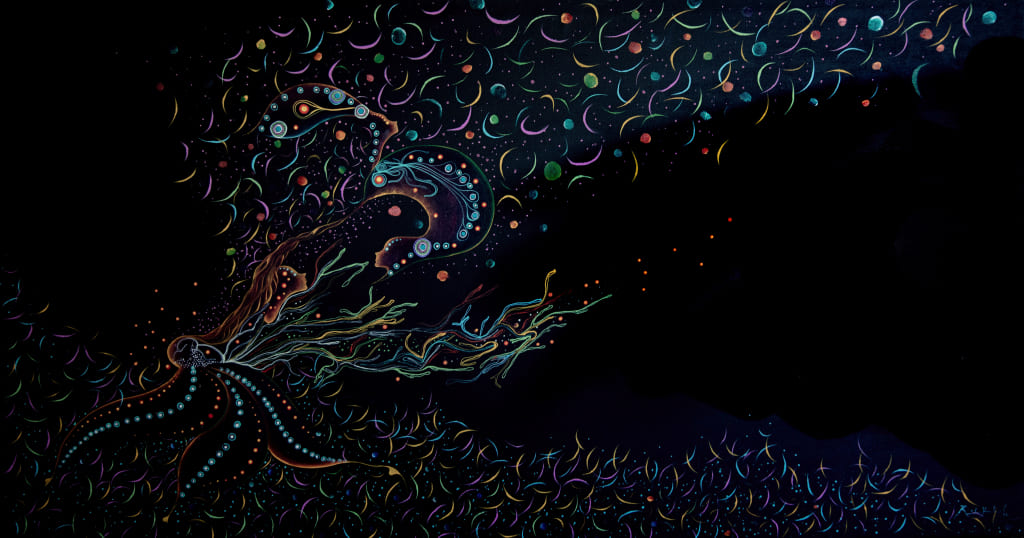
Deliberately departing from narrative discourse, Rember explores the pictorial language of Western tradition.
He introduces characters born from his imagination, still tethered to the Huitoto cosmogony, and incorporates acrylics into a palette dominated by vegetable dyes.
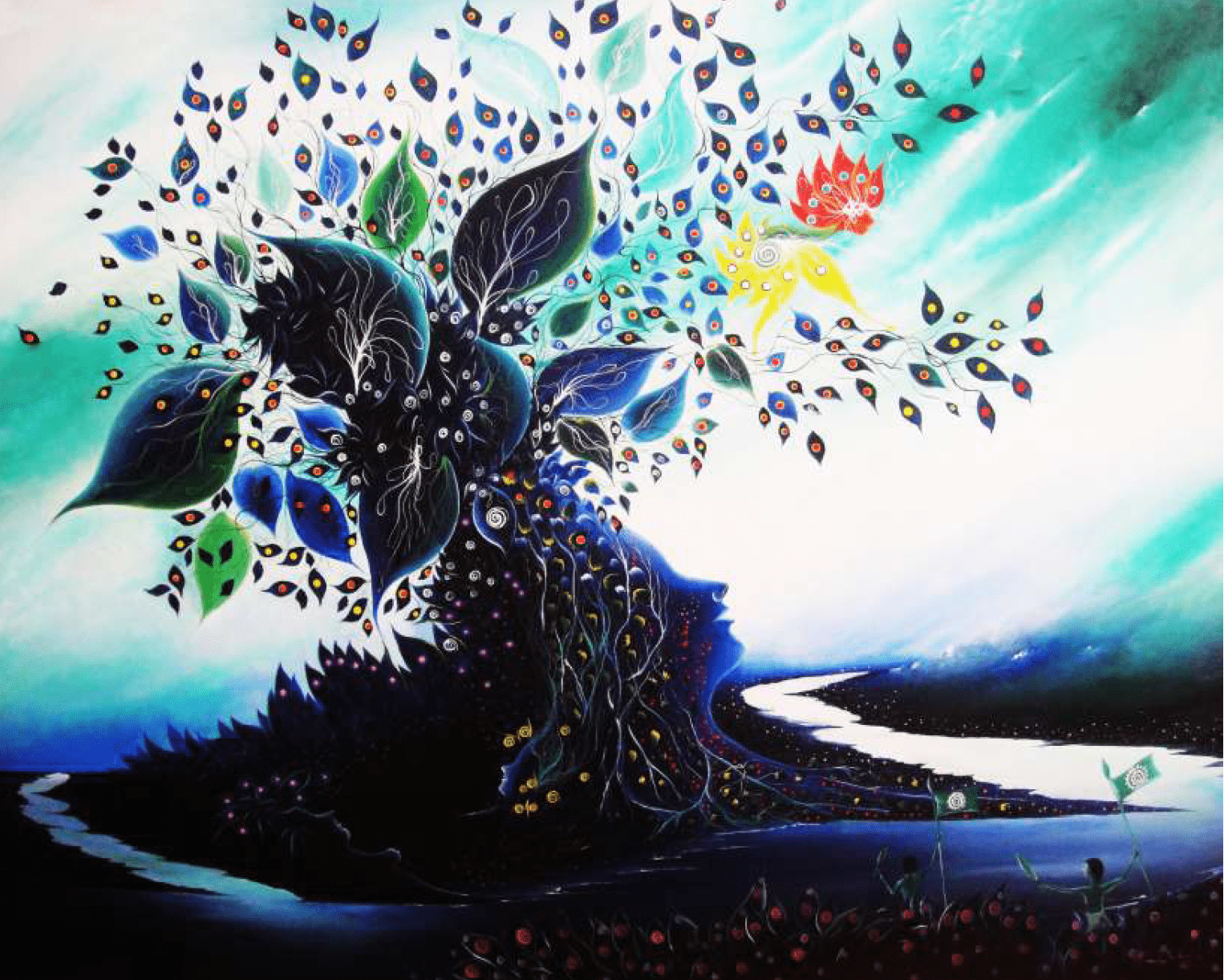
Beyond expressing his cultural roots, Rember aspires to integrate into a society not inherently his own.
He endeavors to share his story, that of the Huitoto, fostering understanding and recognition in the broader community.
Despite the positive reception in urban spaces, Rember always feels the pull to return to his roots once exhibitions conclude.
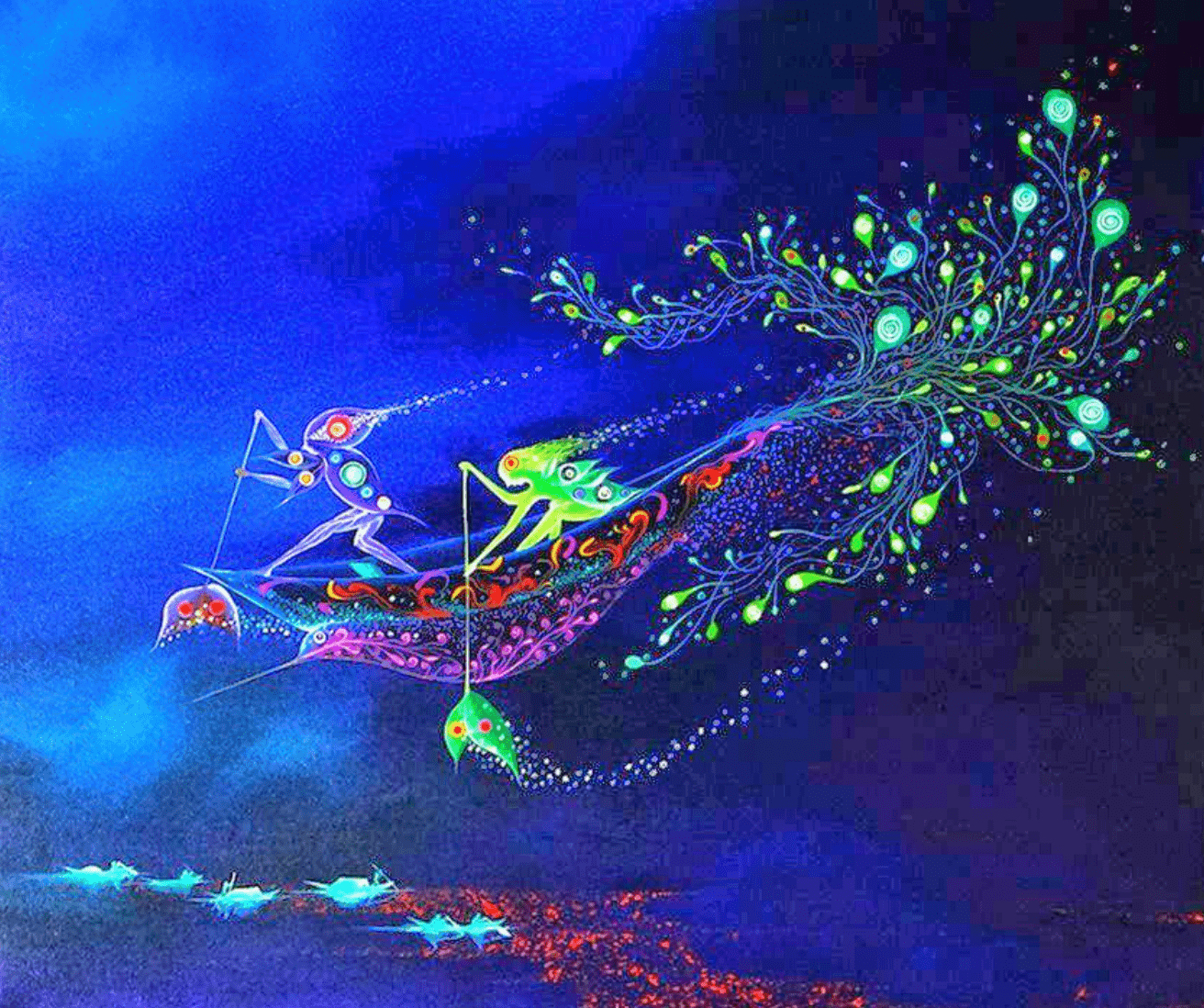
Rember’s artistic process involves hearing the stories told by his grandmother in their native language, translated by his father.
With Huitoto ancestry disrupted by historical displacement, Rember consults anthropological texts to grasp the nuanced meanings behind terms like “Buiñaiño.”
He learned that ican symbolize the wife of the creator, a rainbow, the goddess of water-dwelling beings, and the aguaje palm tree.
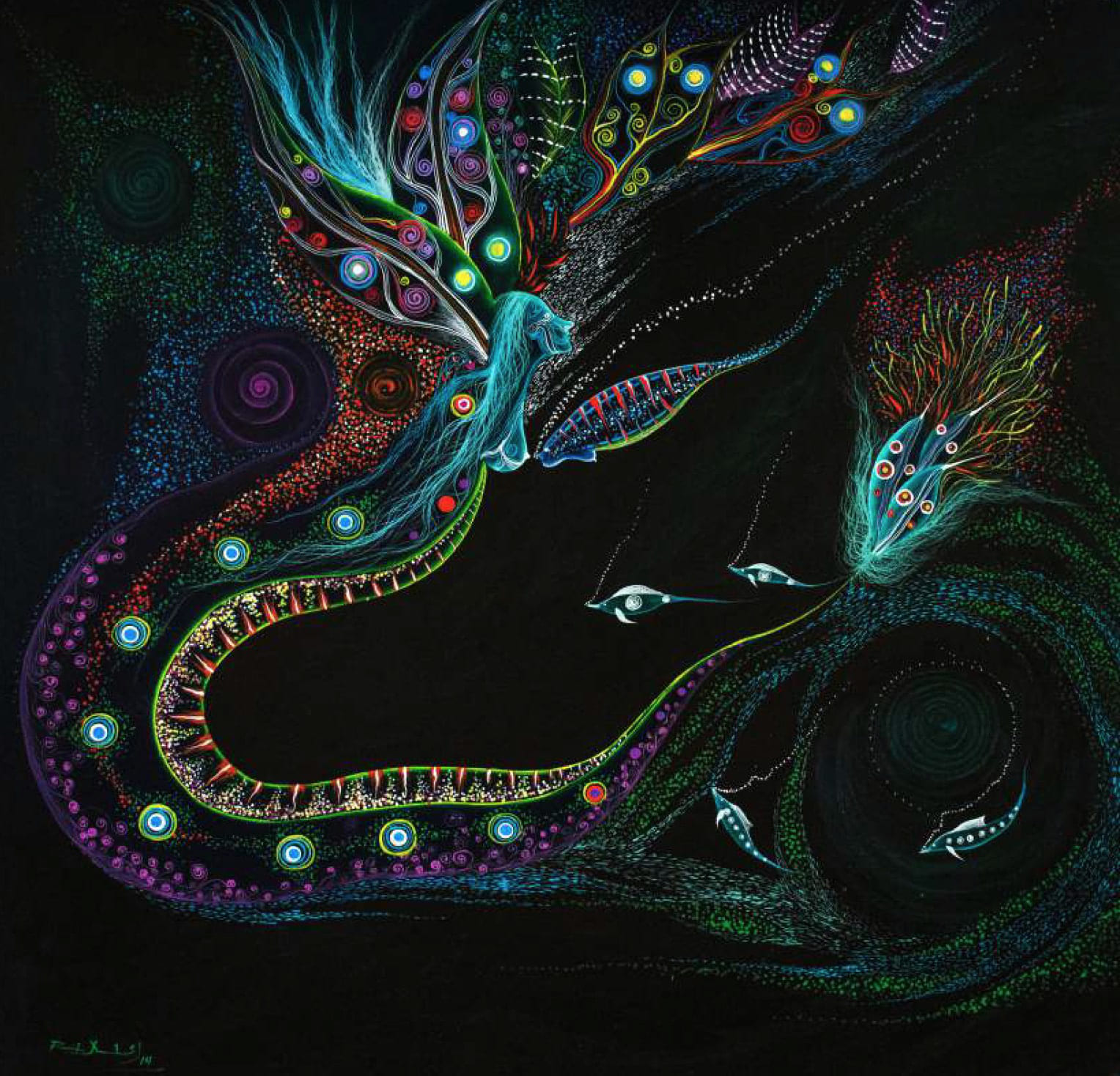
The taut llanchamas and captured characters invite us to sharpen our senses, bridging the gap between Rember Yahuarcani’s iconography and the rhythms of modern city life.
In this exchange, both artist and audience become subjects of study, enriching our shared cultural tapestry.
